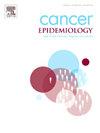成年期最大体重变化与乳腺癌风险:广州生物库队列研究的14年随访
IF 2.3
3区 医学
Q3 ONCOLOGY
引用次数: 0
摘要
背景:肥胖是绝经后乳腺癌(BC)的一个危险因素,但成年期体重波动与乳腺癌风险的关系尚不清楚。方法通过与癌症登记处的联系,对来自广州生物库队列研究(2003-2008)的20,056名50岁及以上的女性参与者进行随访,直至2020年。在基线,最大体重变化被定义为自18岁以来最高和最低体重之间的差异。采用Cox比例风险回归,调整潜在混杂因素。结果在平均14.2年的随访中,共发现326例BC病例。与体重变化小于5 kg的患者相比,18岁以来最大体重增加5 kg或更多与更高的BC风险相关(调整后的风险比[adHR] 1.36, 95 %可信区间[CI] 1.02-1.81; = 0.03页)。在体重增加5 kg或更多的参与者中,每增加1 kg与2 %的BC风险相关(adHR为1.02 / 1 kg, 95% % CI 1.00-1.04; = 0.02页)。在50岁之前达到最高体重的女性中也发现了类似的模式(adHR 1.06 / 1 kg, 95% % CI 1.03-1.08;P & lt; 0.001)。此外,体重增加1公斤与10 %(95 % CI 1.05-1.16;P <; 0.001),20岁时体重大于同龄人的女性患BC的风险更高。结论:这些发现表明,预防成年期体重过度增加,特别是那些在50岁之前体重达到最高的女性和20岁时体重超过同龄人的女性,可能会降低乳腺癌的风险。应强调体重管理,无论是在最高和最早的成年年龄,以减轻BC的风险。本文章由计算机程序翻译,如有差异,请以英文原文为准。
Maximal weight change during adulthood and breast cancer risk: A 14-year follow-up of the Guangzhou Biobank Cohort Study
Background
Obesity is a risk factor for breast cancer (BC) after menopause, but the association of weight fluctuation during adulthood with BC risk remains unknown.
Methods
A total of 20,056 female participants aged 50 years or older from the Guangzhou Biobank Cohort Study (2003–2008) were followed up until 2020 through linkage with the cancer registry. At baseline, maximal weight change was defined as the difference between the highest and lowest weight since age 18. Cox proportional hazards regression was used, adjusting for potential confounders.
Results
During an average follow-up of 14.2 years, 326 BC cases were identified. A maximal weight gain of 5 kg or more since age 18 was associated with a higher BC risk, compared to a weight change of less than 5 kg (adjusted hazard ratio [adHR] 1.36, 95 % confidence interval [CI] 1.02–1.81; P = 0.03). Among participants who gained 5 kg or more, each additional kilogram was associated with a 2 % higher BC risk (adHR 1.02 per 1 kg, 95 % CI 1.00–1.04; P = 0.02). Similar patterns were found in women who reached the highest weight before the age of 50 (adHR 1.06 per 1 kg, 95 % CI 1.03–1.08; P < 0.001). Additionally, a 1-kg increase in weight was associated with a 10 % (95 % CI 1.05–1.16; P < 0.001) higher risk of BC in women who weighed more than peers at age 20.
Conclusions
These findings suggest that preventing excessive weight gain in adulthood, particularly among women who reached their highest weight before 50 years of age and who were heavier than peers at age 20, may reduce BC risk. Weight management should be emphasized, both at the highest and earliest adult years, in mitigating BC risk.
求助全文
通过发布文献求助,成功后即可免费获取论文全文。
去求助
来源期刊

Cancer Epidemiology
医学-肿瘤学
CiteScore
4.50
自引率
3.80%
发文量
200
审稿时长
39 days
期刊介绍:
Cancer Epidemiology is dedicated to increasing understanding about cancer causes, prevention and control. The scope of the journal embraces all aspects of cancer epidemiology including:
• Descriptive epidemiology
• Studies of risk factors for disease initiation, development and prognosis
• Screening and early detection
• Prevention and control
• Methodological issues
The journal publishes original research articles (full length and short reports), systematic reviews and meta-analyses, editorials, commentaries and letters to the editor commenting on previously published research.
 求助内容:
求助内容: 应助结果提醒方式:
应助结果提醒方式:


